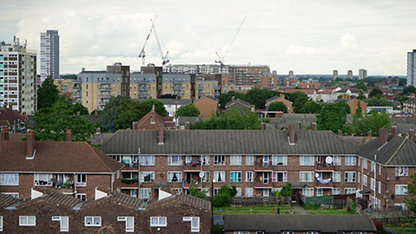As the world faces ageing populations, rising living costs for young people and a new loneliness “epidemic”, we look at pioneering approaches to tackling all three at once.
In 2018, the problem of loneliness rocketed up the global health agenda. The British government appointed its first Minister for Loneliness; Ipsos and the US health insurer Cigna identified a loneliness “epidemic” based on a survey of 20,000 American adults’ sense of social isolation; and the EU revealed that 32% of over-65s across its member states now live alone.
At the same time, young people in cities and regions across the world find themselves struggling to afford their living costs. In England, for example, the Institute for Fiscal Studies reports that house prices have risen by 173% in two decades. Rents have gone up from an average of £140 to £200 per week over the same period, while average pay for 25- to 34-year-olds rose by only 19%.
Now, an initiative in Italy is aiming to tackle both these problems at the same time. Milan – one of the country’s most expensive cities – has 180,000 students, 72% of whom come from elsewhere. Meanwhile, 320,000 of the city’s residents are over the age of 65, and many have homes that are bigger than they need.
Prendi in Casa Uno Studente – roughly translated as “adopt a student” – matches up a “self-sufficient retired person with space at home” and a young person looking for a place to live. The student pays their host a contribution of €250-€280 every month for a safe and comfortable home and, in return for this subsidised rent, they help with housework and provide company.
“According to a 2018 study by the BBC, people aged 16-24 experience loneliness more often and more intensely than any other age group.”
This companionship is not only positive for the host, but also, potentially, for the student. According to a 2018 study by the BBC, people aged 16-24 experience loneliness more often and more intensely than any other age group. A total of 40% of 16-24-year-olds surveyed said they felt lonely “often” or “very often”.
Since the scheme launched in 2004, it has made more than 650 matches. As a whole, Italy has the second-oldest population in the world after Japan, with 23% of its inhabitants aged over 65. But as other developed countries face up to their own ageing populations and skyrocketing rents, similar schemes are beginning to emerge elsewhere.
In 2016, the UK-based flatshare website Spareroom revealed that the number of users on its site who were aged over 65 had risen by 600% in five years – suggesting ample opportunity for Milan-style matches on a more informal basis. As the organisers of Prendi in Casa Uno Studente say: “The project is based on a very simple idea: to bring two generations together for mutual help and constructive confrontation.”
Intergenerational living: new approaches
Live-in students
Humanitas is a retirement community in the Netherlands where hundreds of older people live in apartments, rooms and care facilities, with on-site shops, services and activities. Living alongside them are six students, who commit to spending at least 30 hours a month engaging in activities such as helping out with meals in exchange for board and lodging. A core principle of the scheme is that the students must feel fulfilled and liberated, rather than seeing it as a purely transactional arrangement. Another is that each student must be a “good neighbour” and cause no inconvenience.
Community co-ops
The first initiative by Airbnb’s in-house design studio, the Cedar House in Yoshino, Japan, is operated as a cooperative by the town’s elder residents. The building includes community space as well as Airbnb rental accommodation, and all income generated from paying guests stays in the local community. As Airbnb plans to move further into housebuilding, it remains to be seen how far this altruistic spirit extends across the company. In Japan itself, however, such initiatives point the way toward engaging with rapidly changing demographics that call for increasing care in the community.
Building for the ages
Architects are increasingly conceiving new housing with intergenerational living in mind, such as Levitt Bernstein’s Buccleuch House in Hackney and MaccreanorLavington’s Block R5 in King’s Cross, while Mæ’s Aylesbury Estate redevelopment in south London includes 121 flats for local seniors. The project also features a community centre described as a “21st-century almshouse” with private and social spaces. Also in the UK, the Kohab is a build-to-rent brand aiming to bring “old and young adults together under one roof to live in mutual support”.
- Debika Ray is a London-based freelance journalist, writer and editor.
This article originally appeared in the Good Issue of Modus (April 2019), titled La Mia Casa e la Tua Casa.
RICS Research Trust is now the Property Research Trust
This research was funded by the RICS Research Trust. As of the end of January 2021, RICS Research Trust became fully independent of RICS, and has been rebranded as the Property Research Trust. Find out more here . The Trust supports and promotes high-quality independent contributions to knowledge in the disciplines of land, real estate and construction.


















